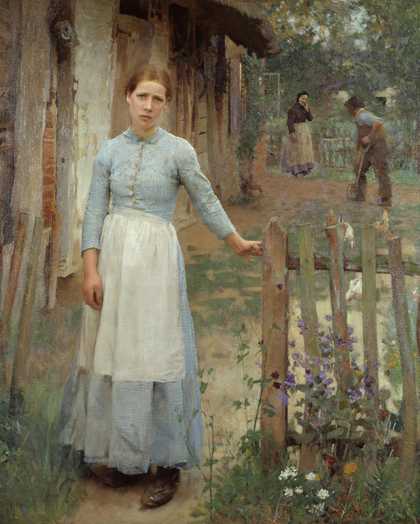Camila Batmanghelidjh on Josef Albers’s Circle 1933
When I see this image it makes me think about our need for caring and understanding interrelationships. It reminds me of the latest arguments in relation to violence. Last year 22 children were violently killed on the streets of Britain. The causes are too often defined in polarised narratives. The rich are “too rich” and the poor “disenfranchised”; some children are described as “pro-social” and others as “amoral”. It’s reflected in an emerging architecture where one half lives behind gated communities and the other behind bars. In the dichotomy there is shame; a space of separation where the perceived and the perceiver reject each other’s gaze. The separation banishes and makes our thinking unsophisticated.
Children become violent because the calming areas of their brain are underdeveloped due to lack of nurture and love. The emotional centres of the brain are over-programmed as a result of relentless exposure to terror and abuse. The consequence is a disregulation in energy and emotional self-management. Civil society wants to distance itself from this dysfunction. It describes the vulnerable child as amoral and seeks to punish the perceived anomaly. This distance makes the child wrong and society right, but it disobeys systemic principals represented by the circle.
The making of the criminal child is as a direct consequence of society’s unwillingness to take robust responsibility for the protection of childhood. No child is born a criminal or a killer. We do something to create them. The space between us is an illusion. Only the fool buys into it.
Circle was presented by The Josef and Anni Albers Foundation in 2006.
Josh Lacey on John Singer Sargent’s Ena and Betty, Daughters of Asher and Mrs Wertheimer 1901
One afternoon I was wandering through Tate Britain and noticed a full-length portrait of two women, hanging so high that I had to walk back and look up, straining my neck. I was entranced by their animation, their intentness, their openness, the force of their personalities.
They are two of the daughters of Asher Wertheimer, a successful Jewish art dealer who had a gallery in Bond Street. I imagine him as wealthy and successful, but always insecure, always conscious that he was, to some extent, considered a foreigner. He commissioned John Singer Sargent to paint twelve portraits of himself, his wife and their children. Jacques-Emile Blanche, who knew both the artist and the family, wrote that Sargent “was excited when he did the Wertheimer family, the father whom Rembrandt would have painted with a turban, the daughters with their gypsy complexion”. The portraits forged a friendship between the enigmatic American painter and the big, bustling brood of Wertheimers. Soon, Sargent was a constant visitor at their house and a place was always kept for him at their dinner table.
I’ve now seen all twelve, but this remains my favourite, mainly because of the passion and vitality in Ena’s face. She’s standing on the right, one hand resting on a vase, the other looped around her younger sister’s waist. Sargent sketched and painted her several times. In some way, although no one knows quite how, he fell for her. And, via him, I did too.
Ena and Betty, Daughters of Asher and Mrs Wertheimer was presented by the widow and family of Asher Wertheimer in accordance with his wishes in 1922.
Hattie Ellis on George Clausen’s The Girl at the Gate 1889

Sir George Clausen
The Girl at the Gate (1889)
Tate
There are hardly any chickens in Tate Britain, except in the sandwiches. Hens outnumber humans by two to one on this planet, but this most popular and populous bird is much overlooked as a living creature, by artists as much as by anyone else.
One exception is The Girl at the Gate by Sir George Clausen. It was painted in 1889, well after the mid-Victorian “hen fever” when new imports of exotic breeds from China sent amateur breeders into a craze of fancy feathers and head furnishings, as well as popularising the novelty of brown eggs. Clausen’s are typical any-day hens, a blur of four, half-hidden by a fence and overshadowed by wild flowers.
Such scratching around by dung-heap fowl could never feed the nation. At this time, eggs were even imported from Australia by ship. Perhaps it is not entirely surprising, if wrong-headed, that the first battery cages were put into action in the 1930s, shutting in hens in the name of progress, hygiene and home production. There is more interest in respecting the natural instincts of hens now, and battery cages are to be banned in Europe by 2012. New methods are being developed for free-range production, and around a quarter of a million amateurs keep chickens in a growing movement of postindustrial, twenty-first-century peasants.
Duchesses and dustmen want to know where their food comes from. This shift in perspective could mean the humble hen will finally get the admiration she is due and become, finally, a subject for the centre of the canvas.
The Girl at the Gate, presented by the Trustees of the Chantrey Bequest in 1890, is on view at Tate Britain.
Thomas Scheibitz on Giorgio de Chirico’s The Painter’s Family 1926
The studio as a waiting room in a sanatorium. The togetherness of the family consoles the painting in the background. They say: “We have begotten something to fit our furnished bodies.” Nothing can claim to be essential. We keep looking, even though the facts already lie in the (stone) cradle. (Long robes conceal the substructure of these ideas.) It’s too late to want to call the essential things a secret. We are actually done with narrative art – anyone can see what’s going on under the built skin.
Nothing lies beneath the tip of the iceberg. One permanent scene beats the next. Travelling frees us from the surrounding context and from the convention of enthusiasts who invariably look upon the old as eternal. We try to see things as having a soul…
On his return, the player gains the upper hand over the family and disperses the problems once more. Stone by stone. What was planned as a ruin falls into disrepair as a new building in the lap of time.
The Painter’s Family was purchased in 1951.

